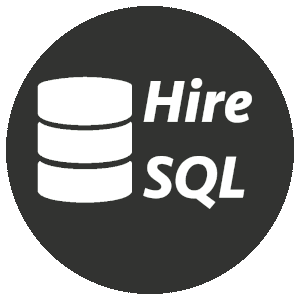
Data Modeling (DM) streamlines data analysis and business intelligence by creating structured data models using methods like entity relationship diagramming.
Data modeling is a crucial aspect of strategic planning and decision-making for businesses. It involves designing and organizing data structures to optimize data storage, retrieval, and analysis.
Effective data modeling lays the foundation for well-designed databases and helps businesses make informed decisions based on reliable and accurate information.
Modeling techniques such as conceptualization, logical design, and physical implementation play a significant role in creating an efficient and robust database structure.
Key Takeaways
- Data modeling is crucial for effective database design and strategic decision-making in businesses.
- There are different types of data models, including conceptual, logical, and physical models.
- Data modeling requires adherence to industry standards and best practices, such as data integrity, scalability, flexibility, and documentation.
Understanding Data Modeling
Data modeling is a critical process in database design and development. It involves creating a visual representation of how data will be organized and stored in a database, enabling businesses to understand their data structures and relationships. A well-designed data model helps businesses avoid data redundancy, inconsistency, and ambiguity, which can adversely impact decision-making processes.
Furthermore, data modeling provides a foundation for scalability and flexibility in database design, allowing businesses to adapt to evolving needs and requirements. By establishing a clear understanding of data relationships and dependencies, businesses can create databases that enable efficient data retrieval, analysis, and reporting.
Key Principles of Data Modeling
Understanding the core principles of data modeling is critical to developing a well-structured database. These principles include:
- Identifying entities: Entities represent the objects, people, or concepts within a business that require data storage and management.
- Defining relationships: Relationships establish how entities relate to one another and the type of relationship they have.
- Ensuring data integrity: Data must be accurate, complete, and consistent.
- Normalizing data: Normalization is the process of organizing data in a database to minimize redundancy and improve data integrity.
- Optimizing for performance: The data model must be designed to enable efficient data retrieval and processing.
By adhering to these principles, businesses can create effective data models that support their strategic goals and decision-making processes.
Example SQL code:
CREATE TABLE employees ( id INT PRIMARY KEY, first_name VARCHAR(50), last_name VARCHAR(50), email VARCHAR(100), phone VARCHAR(20));
As shown in the example above, data modeling involves translating business needs and requirements into a structured format that can be used to design and build a database.
Types of Data Models

In data modeling, different types of models are used for different purposes. Each model provides a specific level of abstraction and detail, allowing developers to design and implement effective database structures. The following are the most commonly used data models:
Conceptual Data Model
The conceptual data model defines the high-level view of the database, describing the entities, attributes, and relationships between them. It provides a strategic planning tool, allowing stakeholders to understand the business requirements and goals before the physical implementation. The conceptual data model is usually represented using entity-relationship diagrams (ERDs) and does not include implementation details such as data types or primary keys.
Logical Data Model
The logical data model describes the database in a more detailed manner than the conceptual model. It defines how data is organized and structured, including the tables, columns, constraints, and relationships. The logical data model is usually represented using data modeling tools and is agnostic to any specific implementation strategy or technology.
Physical Data Model
The physical data model provides a detailed view of the database, including implementation details such as data types, indexes, and storage. It describes how the data is stored on the disk and how the physical database objects such as tables and views are created. The physical data model is usually generated from the logical data model and is dependent on the specific database platform.
Each data model provides a unique perspective on the database design and contributes to the overall success of the data modeling process. Developers should carefully consider which models to use based on the specific requirements of the project.
Example SQL code:
CREATE TABLE customer ( customer_id INT PRIMARY KEY, first_name VARCHAR(50), last_name VARCHAR(50), email VARCHAR(100), phone_number VARCHAR(20) );
Steps in Data Modeling
Data modeling is a complex and iterative process that involves several interrelated steps. By following a well-defined methodology, businesses can create accurate and scalable data models that meet their specific needs. The following are the key steps in data modeling:
1. Requirements Gathering
The first step in data modeling is to gather requirements from stakeholders, including business analysts, data architects, and end-users. This involves identifying the data elements to be stored, their relationships, and the business rules governing them. The goal is to ensure that all data requirements are identified and documented.
2. Conceptualization
Conceptual modeling involves creating a high-level view of the domain being modeled. This involves identifying entities and their relationships, defining attributes, and establishing business rules. The goal is to develop a conceptual model that accurately reflects the business requirements and is understandable to all stakeholders.
3. Logical Design
The logical design phase involves refining the conceptual model into a more detailed and formal representation. This involves creating a logical schema that defines the tables, columns, keys, and relationships between them. The goal is to create a logical model that is independent of any specific database management system.
4. Physical Implementation
The final step in data modeling is to implement the logical design in a specific database management system. This involves creating physical tables, columns, and relationships based on the logical schema. The goal is to create a physical implementation that accurately reflects the logical design and meets the performance and scalability requirements of the business.
Overall, data modeling is an essential part of any database design process. By following a systematic and well-defined methodology, businesses can create effective data models that meet their specific needs and support their strategic decision-making.
Data Modeling Examples
Data modeling is a critical component of database design and is used in various industries to improve business processes and outcomes. Here are some examples of data modeling in action:
1) Retail
In the retail industry, data modeling is used to track sales trends and customer behavior. By analyzing customer data, businesses can make informed decisions about product offerings, pricing strategies, and marketing campaigns. For example, a retail company may use a dimensional model to analyze sales by product category, region, and time period.
2) Healthcare
Data modeling is also used in healthcare to improve patient outcomes and reduce costs. By analyzing patient data, healthcare providers can develop personalized treatment plans and identify trends in disease progression. For example, a healthcare provider may use a conceptual model to map out the relationships between patients, medical procedures, and diagnoses.
3) Finance
In the finance industry, data modeling is used to analyze market trends and make informed investment decisions. By analyzing financial data, investors can identify patterns and predict future market behavior. For example, a financial institution may use a logical model to map out the relationships between stocks, bonds, and other investments.
4) Education
Education is another industry where data modeling can be used to improve outcomes. By analyzing student data, educators can develop personalized learning plans and identify areas where additional support is needed. For example, a school district may use a physical model to map out the relationships between students, teachers, and curriculum.
Overall, data modeling is a powerful tool for businesses in various industries to improve decision-making and drive success.
Tools for Data Modeling
There are various software tools available in the market to facilitate the data modeling process. These tools range from commercial software solutions to open-source options, providing users with a wide range of options to choose from based on their specific requirements.
Some popular tools for data modeling include:
- ERWin – a popular commercial data modeling tool widely used for conceptual, logical, and physical data modeling
- Toad Data Modeler – another commercial tool that provides users with a comprehensive set of data modeling and database design features
- Lucidchart – an intuitive cloud-based tool that allows users to create flowcharts, diagrams, and data models easily
- MySQL Workbench – a popular open-source tool for database design, development, and administration
These tools offer a range of features and benefits, including drag-and-drop interfaces, customizable templates, easy collaboration, and powerful visualization tools. Choose the tool that best suits your specific requirements and budget.
Data Modeling Techniques
DM is a complex process that requires both creativity and technical expertise. There are several modeling techniques that developers can use to optimize data structures and improve performance. Here are some of the most commonly used data modeling techniques:
Normalization
Normalization is the process of organizing data in a database to reduce redundancy and dependency. It involves breaking down a table into smaller tables and defining relationships between them. Normalization helps to eliminate duplicate data and prevent inconsistencies, resulting in a more efficient database design. Developers use different normal forms to ensure data is properly structured and easy to retrieve.
Denormalization
Denormalization involves adding redundant data to a database to improve performance. It involves duplicating data from one table into another to minimize the need for complex joins. Denormalization can help to speed up data retrieval and improve query performance, particularly in systems with large datasets.
Dimensional Modeling
Dimensional modeling is a technique used in data warehousing that involves organizing data into dimensions and facts. It is a highly structured approach that focuses on the relationships between data elements. Dimensional modeling is commonly used in business intelligence systems, where it provides a flexible and scalable way to analyze large volumes of data.
SQL Example:
CREATE TABLE customers ( customer_id INT PRIMARY KEY, first_name VARCHAR(30), last_name VARCHAR(30), email VARCHAR(50) ); CREATE TABLE orders ( order_id INT PRIMARY KEY, order_date DATE, customer_id INT, FOREIGN KEY (customer_id) REFERENCES customers(customer_id) );
Using SQL, developers can create normalized tables that are properly structured and free from redundancy. They can also use denormalization techniques to improve the performance of the database. In addition, developers can use dimensional modeling to organize data effectively, making it easier to retrieve and analyze.
Data Modeling Challenges

DM is a complex process that involves multiple challenges for businesses. Here are some of the most common challenges that organizations face:
- Data Quality: Ensuring that data is accurate, complete, and consistent is crucial in data modeling. Poor data quality can lead to incorrect conclusions and wasted resources.
- Scalability: As businesses grow and generate more data, their data models must scale accordingly. Building scalable data models requires careful planning and design.
- Evolving Business Requirements: Business requirements are constantly changing, and data models must adapt to reflect these changes. Failure to do so can lead to outdated models that no longer meet the needs of the organization.
To overcome these challenges, businesses must implement effective DM strategies that prioritize data quality, scalability, and flexibility. It is also important to stay up-to-date with the latest trends and best practices in data modeling.
SQL Code Example:
CustomerID FirstName LastName Address City State ZipCode 1 John Doe 123 Main St Anytown CA 12345 2 Jane Smith 456 Oak St Anytown CA 12345 In this example, we have a simple table that stores customer information. To ensure data quality, we can add constraints to the table to enforce rules about data integrity. For example, we can require that every customer has a unique ID, that the first and last names are not null, and that the zip code is a valid 5-digit number.
Data Modeling Best Practices

DM is a critical process that requires attention to detail and adherence to industry best practices. By following these best practices, developers can ensure that their data models are scalable, performant, and reliable. Here are some key data modeling best practices to keep in mind:
1. Ensure Data Integrity
Data integrity is essential to the accuracy and reliability of your data. To ensure data integrity, it’s important to define primary and foreign keys, enforce referential integrity, and use constraints to prevent invalid data entry. Additionally, consider implementing data validation rules and performing regular data quality checks.
2. Plan for Scalability
As your business grows and your data requirements change, your data models must be able to scale accordingly. Make sure you plan for scalability by using appropriate data types, carefully considering data relationships, and avoiding unnecessary denormalization. Additionally, consider using partitioning and other techniques to improve query performance as your data grows.
3. Maintain Flexibility
Business requirements change over time, so it’s important to maintain flexibility in your data models. Plan for future changes by using naming conventions that reflect the underlying business concepts, defining business rules separately from your code, and documenting your data models in detail. Additionally, consider using stored procedures and other techniques to encapsulate your business logic and minimize the impact of changes.
4. Use Clear and Consistent Naming Conventions
Clear and consistent naming conventions make it easy for developers to understand your data models and write effective queries. Use descriptive names for tables, columns, and relationships, and avoid using abbreviations or acronyms that may be unclear or confusing. Additionally, consider using a standard naming convention, such as PascalCase or snake_case, to ensure consistency across your data models.
5. Document Your Data Models
Documentation is essential for understanding and maintaining your data models over time. Use a standard format for documenting your data models, including information on tables, columns, relationships, and business rules. Additionally, consider using data modeling tools that support automatic documentation generation, or create your own templates to ensure consistency.
6. Test Your Data Models
To ensure the performance and accuracy of your data models, it’s important to test them thoroughly. Use automated testing tools to validate your data models against common use cases and edge cases, and perform manual testing as needed to verify correctness. Additionally, consider implementing performance testing to identify bottlenecks and areas for optimization.
7. Stay Up-to-Date with Industry Standards
As DM techniques and best practices evolve over time, it’s important to stay up-to-date with industry standards and best practices. Attend conferences, read industry publications, and network with other data modeling professionals to stay current on the latest trends and techniques. Additionally, consider joining professional organizations and participating in online communities to broaden your knowledge and gain valuable insights.
By following these data modeling best practices, you can ensure that your data models are scalable, flexible, and reliable, setting your business up for success.
Hiring Dedicated SQL Developers for Data Modeling
DM is a critical aspect of database design and management. By developing organized and structured data models, businesses can effectively plan, strategize, and make informed decisions. However, data modeling can be a complex and challenging process, requiring specialized skills and expertise. This is where dedicated SQL developers, such as those provided by HireSQL, can help.
At HireSQL, we offer a team of experienced SQL developers who specialize in DM techniques. Our developers have a deep understanding of data modeling best practices and know how to design effective data structures that meet your business requirements. With HireSQL, you can enjoy the benefits of having a dedicated team of experts working on your data modeling projects.
Our developers are well-versed in various DM techniques, including normalization, denormalization, and dimensional modeling. They have hands-on experience working with various data modeling tools, such as ER/Studio, PowerDesigner, and ERwin. Our developers can work with you to identify the right modeling technique and tool for your business needs.
By hiring dedicated SQL developers from HireSQL, you can ensure that your DM projects are completed on time and with the highest quality. Our developers have excellent communication skills and can work in English to ensure seamless collaboration with your team. They can also provide ongoing support and maintenance to ensure that your data models remain up to date and effective.
If you are looking for a reliable outsourcing partner who can provide dedicated SQL developers for your DM needs, look no further than HireSQL. Contact us today to learn more about our services and how we can help your business succeed.
Data Modeling Conclusion
DMis an essential aspect of effective database design and strategic decision-making in businesses. By organizing and structuring data effectively, organizations can gain valuable insights into their operations, customers, and market trends.
This article has highlighted the fundamentals of data modeling, including the different types of models, the step-by-step process, and best practices. We have also explored advanced data modeling techniques, such as normalization and dimensional modeling, along with their benefits.
Challenges and pitfalls related to DM have been discussed, along with solutions to overcome them. We have also highlighted the relationship between data modeling and business intelligence and showcased practical examples across various industries.
At HireSQL, we offer dedicated SQL developers who are experts in data modeling and database design. Our developers are proficient in English and can deliver high-quality data modeling solutions that meet your business needs. By partnering with us, you can leverage our expertise to optimize your data structures and achieve better business outcomes.
As you consider your DM needs, remember that effective data modeling is critical to your success as a business. By implementing best practices and leveraging advanced techniques, you can optimize your data and make strategic decisions that drive growth and innovation.
FAQ

Q: What is data modeling?
A: DM is the process of creating a visual representation of an organization’s data structure, relationships, and rules. It helps in organizing and structuring data effectively for strategic planning and decision-making.
Q: Why is data modeling important in database design?
A: DM is crucial in database design as it helps in defining the structure, constraints, and relationships of the data. It ensures data integrity, scalability, and optimal performance of databases.
Q: What are the different types of data models?
A: There are three main types of data models: conceptual, logical, and physical. Conceptual models provide an abstract view of the system, logical models define the structure and relationships of the data, and physical models represent the implementation of the data model in a specific database management system.
Q: What are the steps involved in DM?
A: The DM process typically involves requirements gathering, conceptualization, logical design, and physical implementation. Each step focuses on different aspects such as understanding business needs, designing data structures, and implementing the model in a database management system.
Q: What tools can be used for data modeling?
A: There are various tools available for DM, including both commercial and open-source options. Some popular tools include ERwin, Oracle SQL Developer Data Modeler, MySQL Workbench, and Lucidchart.
Q: What are some advanced DM techniques?
A: Advanced DM techniques include normalization, denormalization, and dimensional modeling. Normalization helps in reducing data redundancy and improving data integrity, denormalization enhances performance by reintroducing redundancy, and dimensional modeling is used for data warehousing and analysis purposes.
Q: What are some best practices in DM?
A: DM best practices include ensuring data integrity, scalability, and flexibility. It is also important to document the data model and adhere to industry standards and guidelines for effective and efficient data modeling.
Q: What are the challenges in DM?
A: Common challenges in DM include maintaining data quality, handling evolving business requirements, and ensuring scalability. It requires careful planning, constant communication, and adaptation to overcome these challenges.
Q: How does DM relate to business intelligence?
A: DM plays a crucial role in business intelligence as well. A well-designed data model facilitates accurate reporting, data analysis, and decision-making within organizations by providing a solid foundation for data integration and analysis.
Q: Can you provide examples of DM in different industries?
A: DM is used in various industries such as healthcare, finance, retail, and manufacturing. For example, in healthcare, data modeling can help in defining patient data structures and relationships for efficient electronic health record systems.
Q: Why should I consider hiring dedicated SQL developers for data modeling?
A: Hiring dedicated SQL developers for data modeling projects ensures that you have experts with the necessary language proficiency and expertise to deliver high-quality data modeling solutions. They can provide efficient and customized solutions for your specific data modeling needs.
Sarah is an accomplished author, esteemed for her expertise in the field of data science and her engaging written works that cater specifically to the data industry. Residing in the vibrant city of London, she embarked on an academic journey at Cambridge University, where she immersed herself in the world of mathematics. This foundational education formed the bedrock of her illustrious career.
Driven by a desire to broaden her horizons, Sarah sought new challenges and opportunities, leading her to embrace a pivotal role at NetApp, a renowned data storage consultancy firm. In this capacity, she thrived in the dynamic landscape of data architecture, devising innovative strategies to optimize data storage, retrieval, and management for a diverse range of clients. Sarah’s intricate understanding of the intricacies of data systems and her ability to craft tailor-made solutions earned her accolades and solidified her reputation as a sought-after industry expert.
Beyond her professional pursuits, Sarah gracefully balances her roles as a devoted mother and an accomplished equestrian. She finds immeasurable joy in nurturing her daughter, guiding her through the intricacies of life, and instilling a love for knowledge and creativity. Sarah’s dedication to both her family and her career exemplifies her unwavering commitment to excellence in all facets of life.








